Artist Interviews 2022
Francesco Bongiorni 
By Laura Siebold
www.francescobongiorni.com
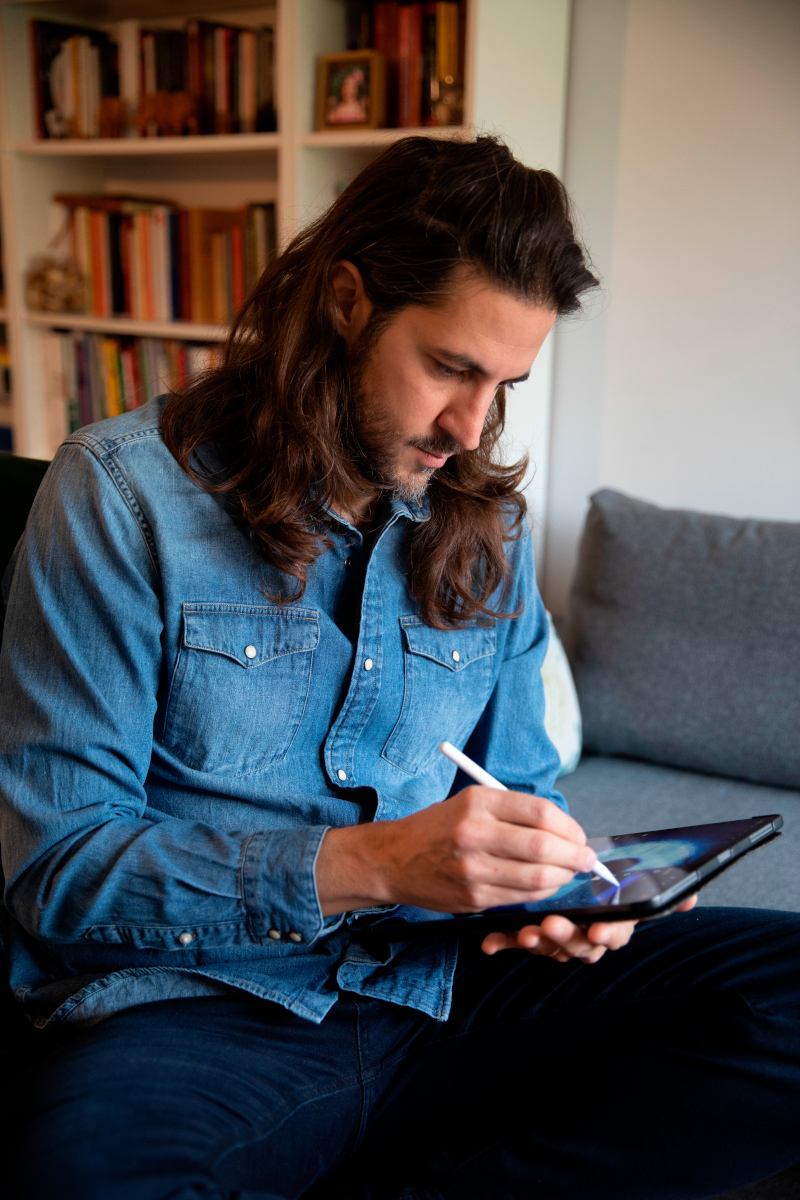
Photo: Ilaria Della Rocca
Francesco Bongiorni is an Italian freelance illustrator, based in Madrid, Spain. The artist has been exposed to art since his childhood and explores his creative passion every day. Francesco is involved in a variety of projects, and his illustrations get regularly published in well-known publications in France, GB, and the U.S. In his interview, Francesco shares insights into his curiosity, the story behind his first published illustration, and his view of “images are the fastest vehicle of ideas”.
Read on for a deeper look into Francesco’s multifaceted images, and his passion projects.
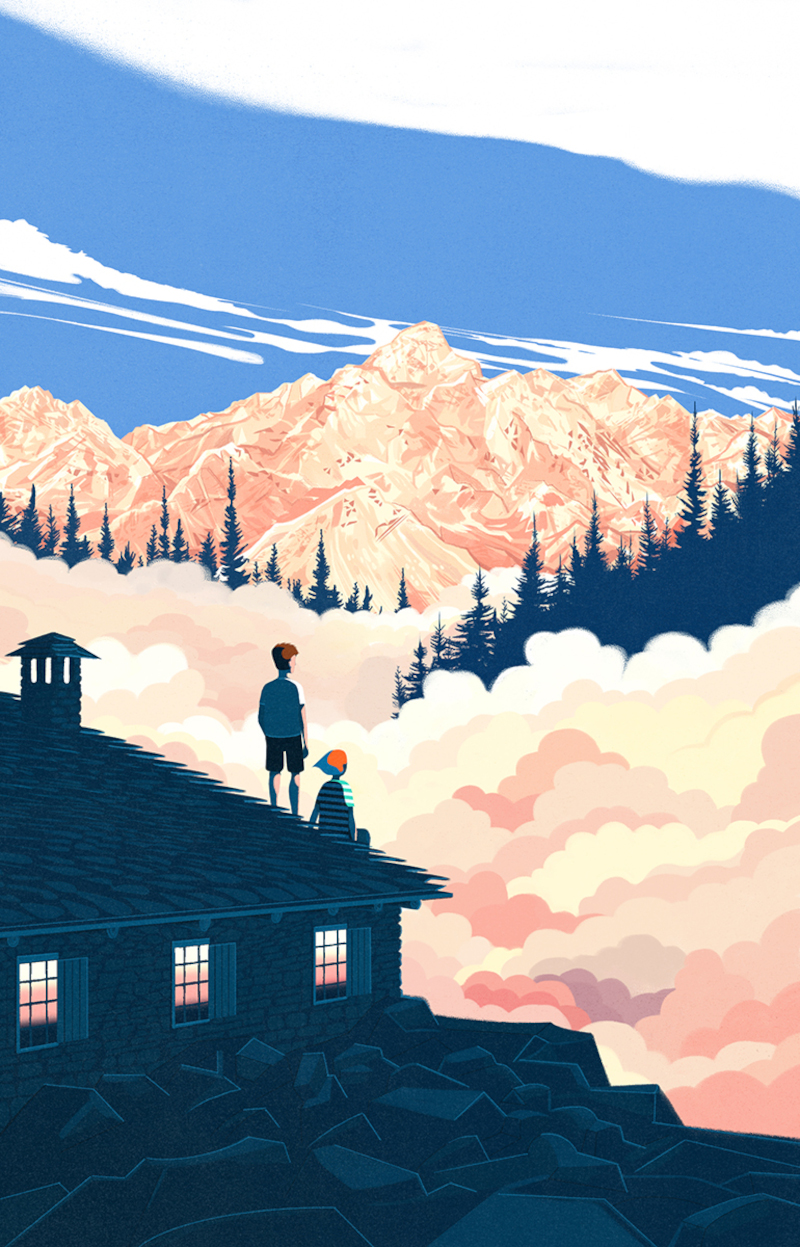
Francesco, you are an Italian freelance illustrator, based in Madrid, Spain, but also have a presence in Milan, Italy. When did you first move to Spain and was the move inspired by your work? Are you part of an artistic community in both countries?
I first moved to Spain in 2005 for the Erasmus project, studying painting in Salamanca. After a year, I returned to Italy, but I felt the desire to go back to Spain because I loved the country. I found Spanish culture and history to be fascinating because of a very interesting mix of cultures and influences. In 2008, I moved to Madrid. I had no idea I would stay there for so long since I am still here. I try to cultivate relationships with the art communities in both countries, even though it is not always easy because of the distance. In any case, I always find it inspiring to see how each country has its own specificities and the artists fully reflect them.
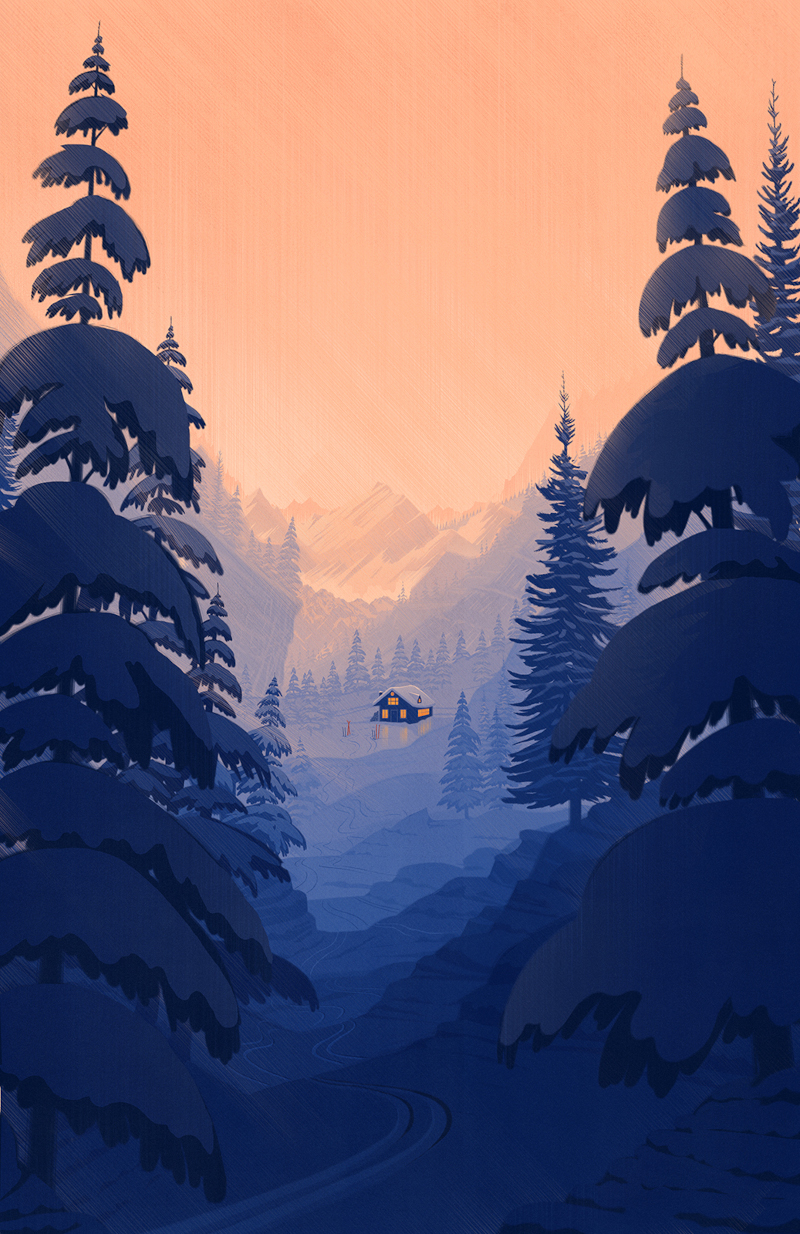
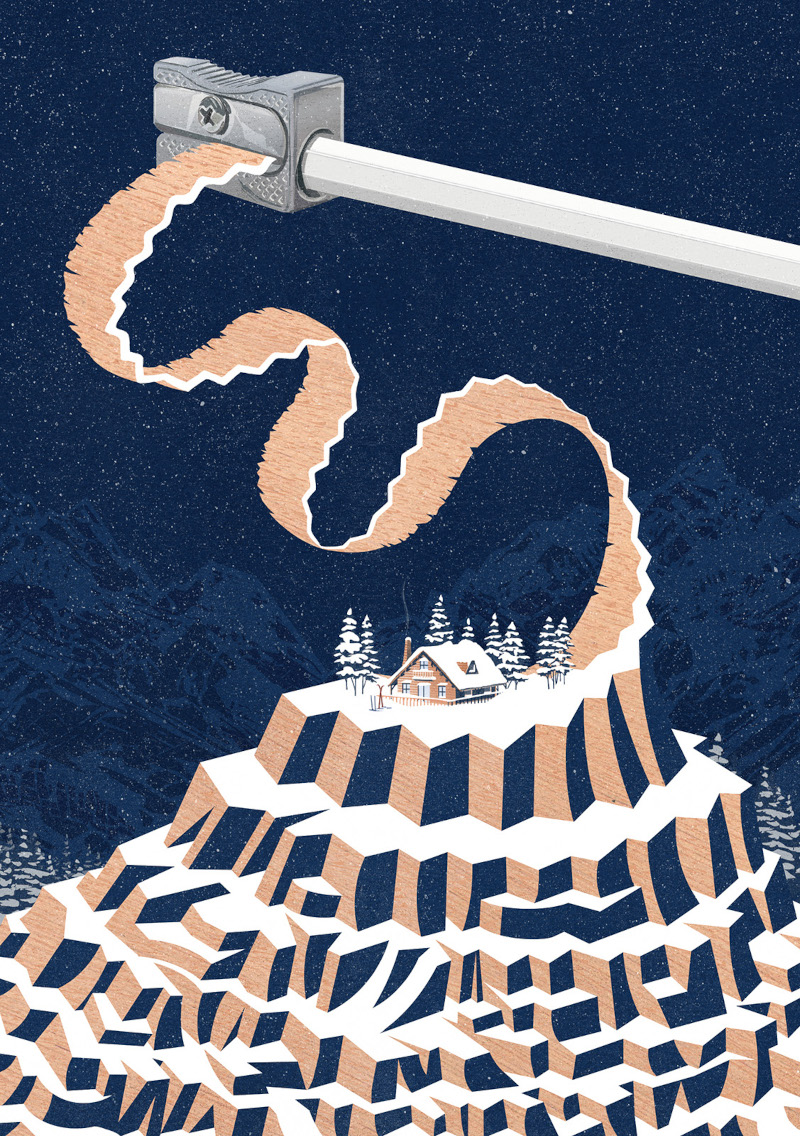
You received a very broad and diverse art education from different universities and art schools, and your work ranges from advertising, over book covers, and editorials, to tourism projects and social/political illustrations. Can you tell us about your early beginnings in the art world? When did you create your first professional illustration?
I was lucky enough to be born into a family with a very high density of artists: drawing artists, painters, set designers, architects.... I grew up in an environment where it was normal for my dad to sit and draw by my side. You could feel the creative ferment in everyday life. Indeed, there was a kind of sense of emulation on my part toward older brothers or cousins who were more mature in their artistic pursuits. From an early age, I always drew and found it natural to continue my studies on that path.
The story of one of the first illustrations is very fun. I was in my early twenties and was supposed to go away with some friends for a weekend on an Italian island: the Isola d'Elba. We were supposed to leave around evening and drive a few hours to reach the port where we would embark. In the early afternoon, having finished packing my backpack, I thought I would take advantage and send a few emails to possible clients to present my portfolio. Mostly they were fairly small magazines but at some point, I'm not sure for what reason, I decided [I would] try sending an email to The New York Times. "Why not?", I thought. As I said, I was in my twenties and had a lot of nerves. Only a few hours had passed, and I got a reply. One of the art directors of The NY Times had seen my work and asked me to create an illustration by the end of day. This meant, given the time difference, to deliver the image by about midnight. I didn't give it a second thought and warned my friends that I would not be leaving. It was five in the afternoon, I had to deliver by midnight, and I was a young and inexperienced illustrator. But I was craving to be challenged. I started working and managed to deliver the illustration on time. The next day, seeing my work on the NY Times website with my name on it gave me a huge boost. An intense emotion that I still remember.

Your work as an illustrator is incredibly detailed. You just posted a video on IG a couple of days ago (Nov 23 2022) where you lead the viewers through each of the layers of your illustrations which are not discernible to the human eye anymore by simply looking at the final illustration. Can you give us some insights into how you plan those different details? How long does it take to create such a complex image like that of the reflection in the wine glass?
I have always liked antique engravings. I think that's where my attention to detail comes from. I like to use the zoom to literally get into the landscapes I create and add a little element here and there. I can, fortunately, still be quite fast in my work and am on time with my deliveries. Certain particularly detailed images, however, take several days of work.
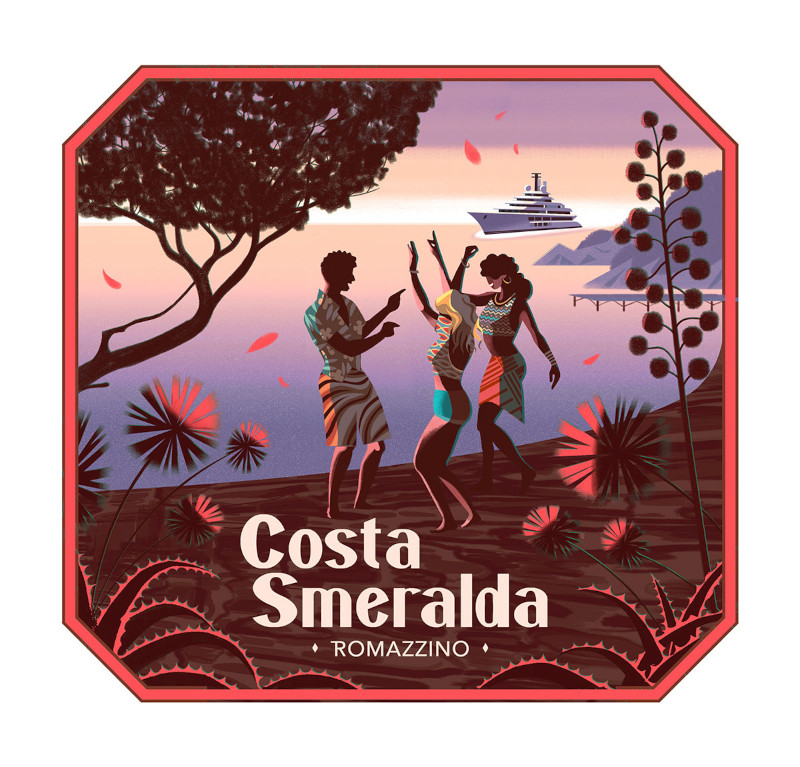
I discovered your work during my search for artists portraying the current political situation in Iran, among them being human rights violations, and protests as society’s reaction to it. Your work “Justice for Mahsa Amini” shows Amini as a heroine, a symbol in the fight against oppression and discrimination against women. How do you wish that your illustration is received and the message of the call for justice is carried forward?
It all came about when in 2009 The New Yorker called me to do an illustration for an article titled: "Veiled Threat". The article was about Negin: a Tehran artist brutally beaten by police during a demonstration. Almost fifteen years have passed, and we are still there. I reposted that illustration on Instagram and within hours thousands of people had interacted with my post and thanked me. I felt a little uncomfortable because I had done absolutely nothing but post an image from the comfort of my own home. In any case, I received a lot of messages, mostly from Iranians, and with some of them I started talking. I had no idea that things had gotten to that point. Gradually they started sharing videos, photos, etc. with me. In short, I felt involved and a few days later I created the "Justice for Mahsa Amini" poster. Unfortunately, she is just one among many victims of an absolutely dramatic situation.
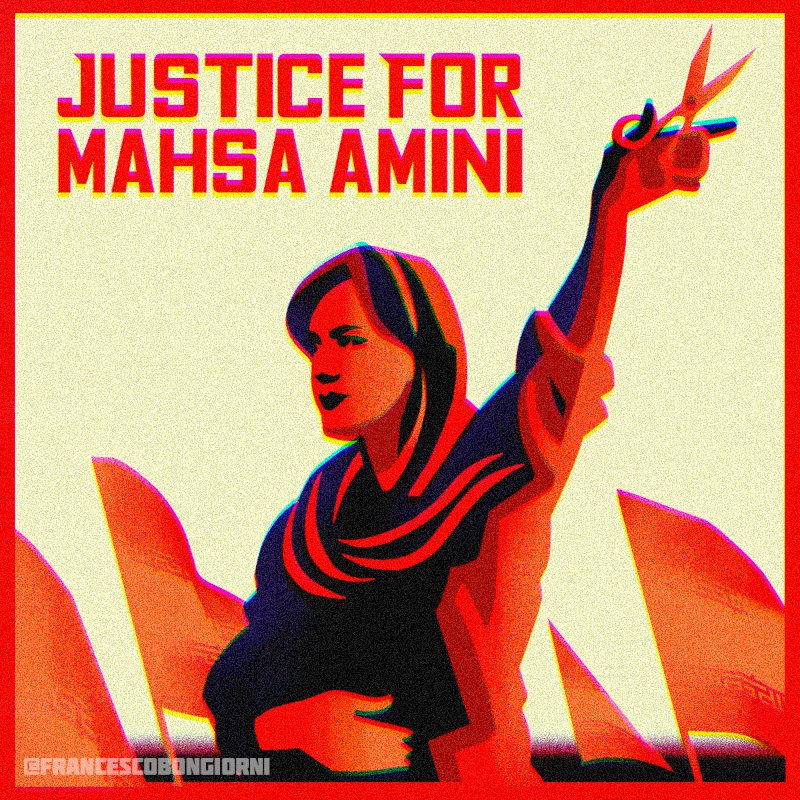
Your presence as an illustrator goes beyond Spain and Italy, it also involves France, Great Britain, and the U.S. Your website states that you regularly collaborate with The New York Times, AC Milan, Air France, The Guardian, Washington Post, The Wall Street Journal, and Le Monde. How did these collaborations come to life? Do you identify yourself as a political, or social illustrator?
I first identify myself as someone who loves to create beautiful images. The idea behind it is to always put [out] the highest quality. I work with clients from different countries, and it is a lot of fun to see how each place has its own peculiarities in terms of work, art direction, email writing...I like to try putting myself in different areas, and my work allows me to do all that.
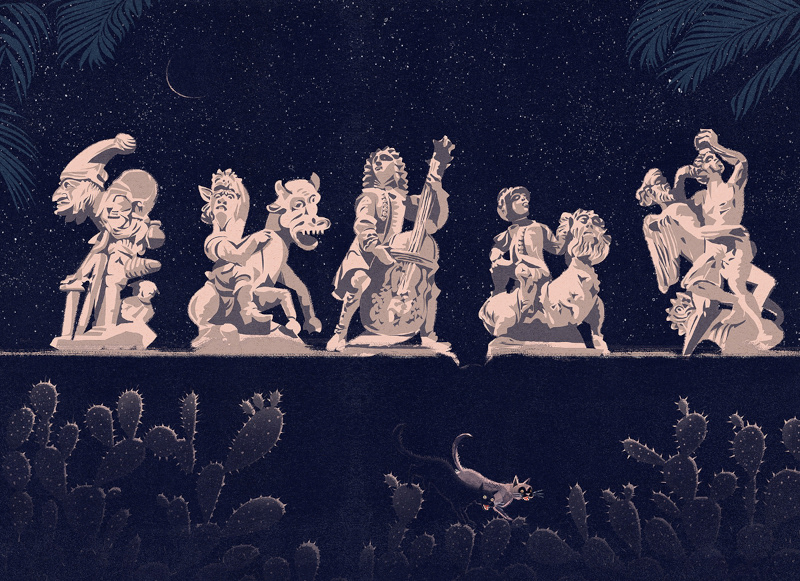
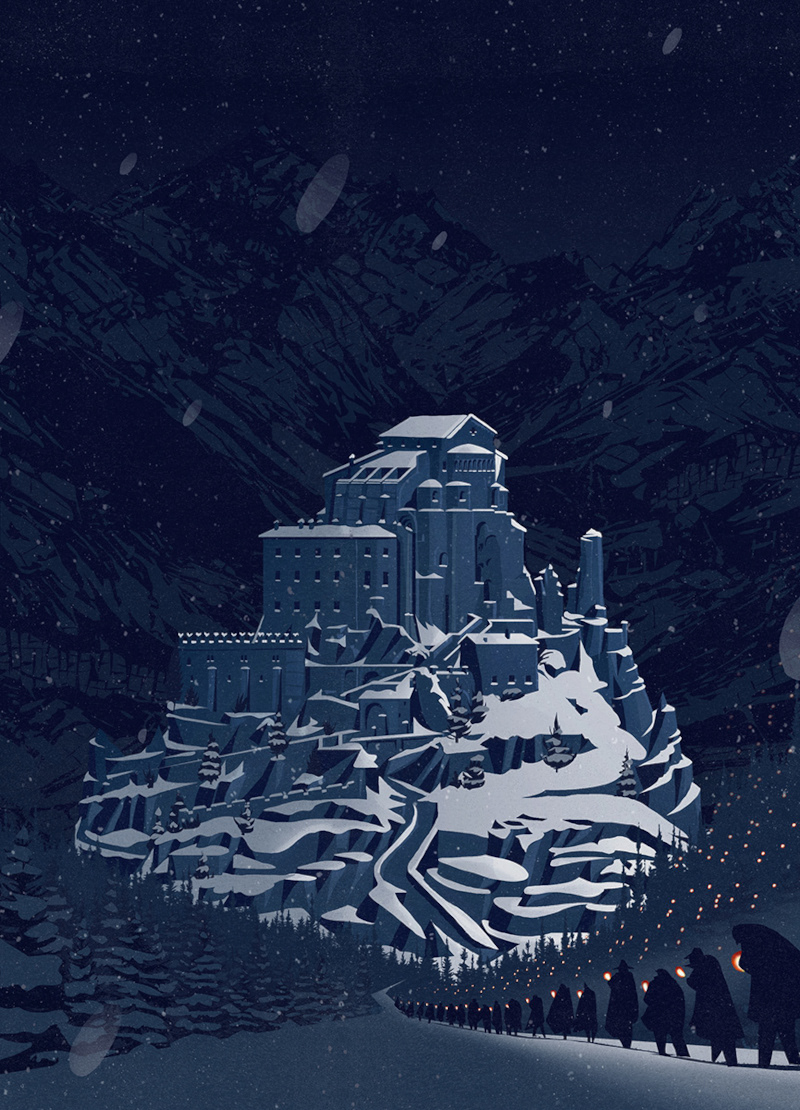
What or who would you say has been your biggest inspiration to this day? Please go into detail with your explanation.
I hope this doesn't sound like a triviality, but my inspiration is my curiosity. I am a person with various interests and devoting some time to each of them helps me in my work, even if they are not strictly related to creativity. The artistic process cannot be just an "output" but, in order to be healthy and balanced, there needs to be an "input", as well. A sort of assimilation of things that inspire us and make us feel good. In my case, exploring places I don't know, seeing exhibitions, listening to live music, reading books, studying history, spending time with people I love and even growing chili peppers are activities that recharge me and are somehow reflected in my work.
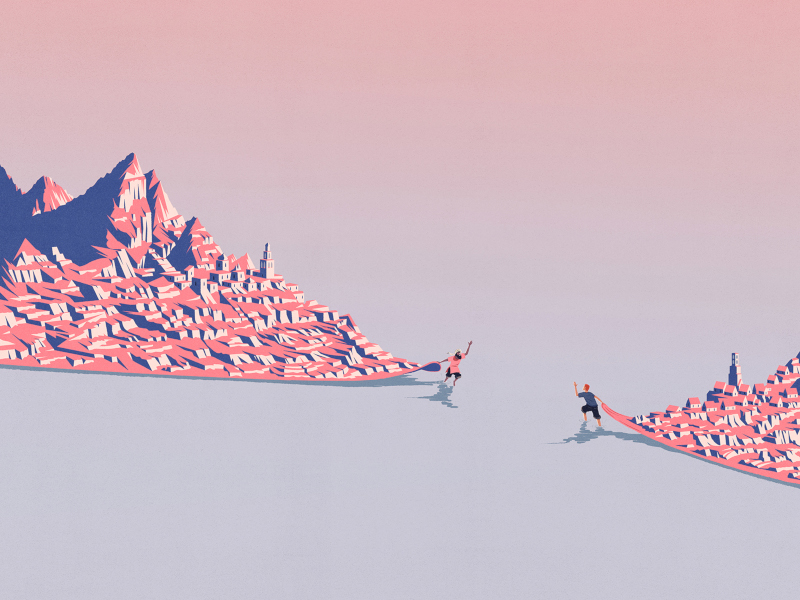
What is one of the most important lessons you’ve learned throughout your career?
That when we are bored, we create boring illustrations.
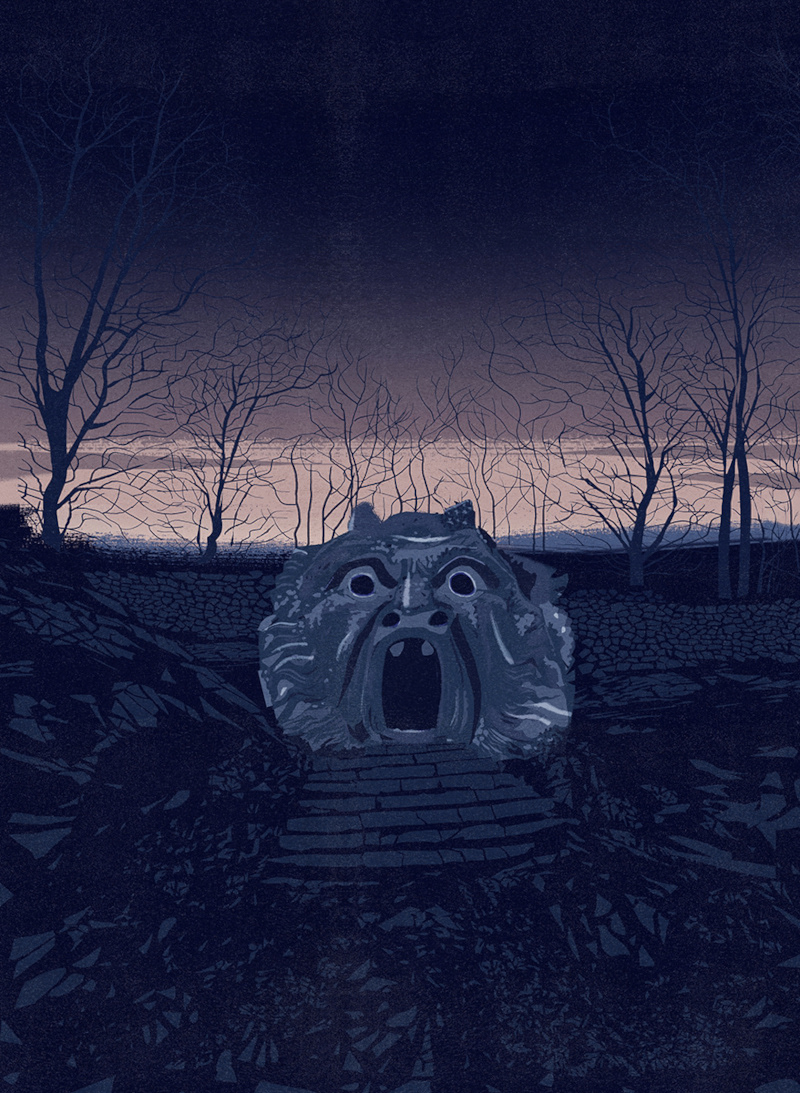
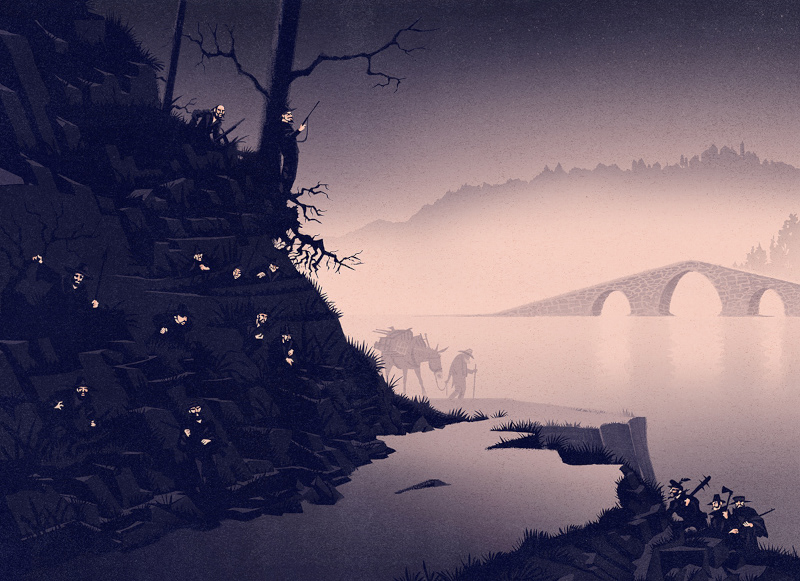
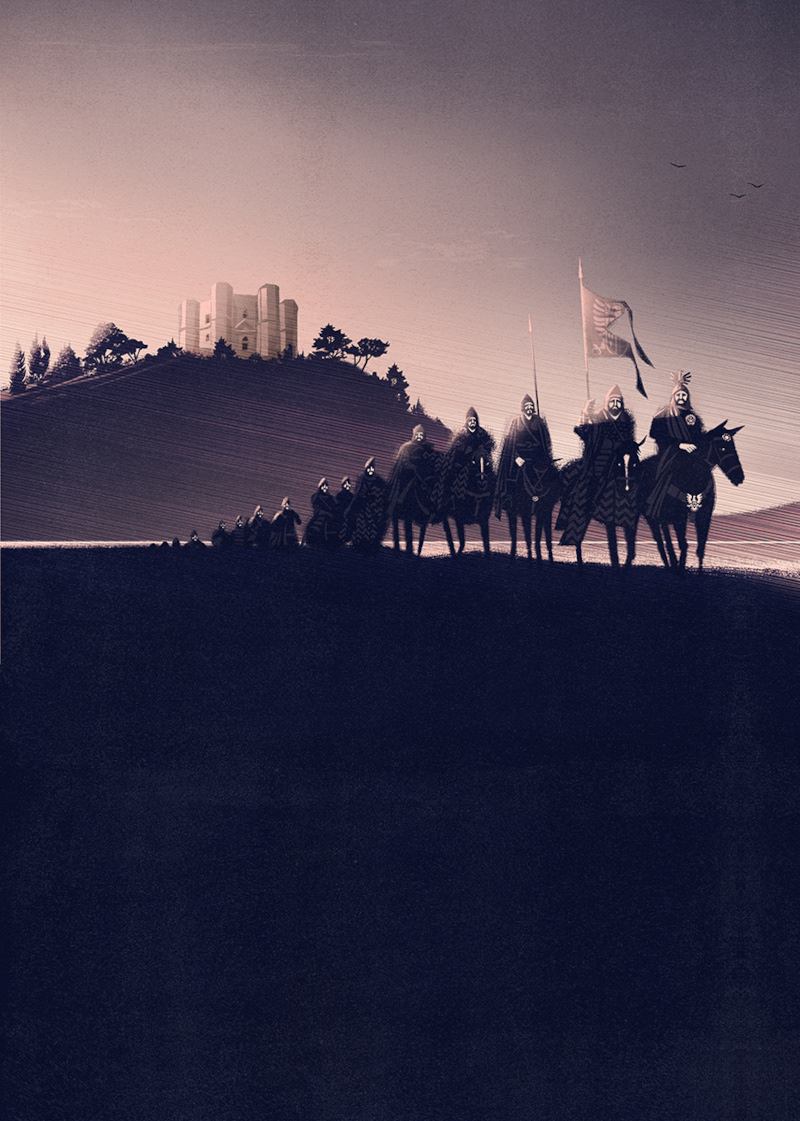
Looking at the many attacks on cultural and social minorities, sanctions, and human rights violations around the world, what do you think can be the artist’s contribution in raising awareness to those important issues?
This is a difficult question. I would like to say that I think artists can have a strong impact, but I am not convinced. Or rather, I'm afraid that our contribution can be very small, especially when it comes to posting an image on Instagram. In any case, if as individuals we have a limited voice, as a collective I think it is different. If thousands of people protest something, then they can change it. The power of images is that they are understood by everyone. No need for translations to other languages, images are the fastest vehicle of ideas.
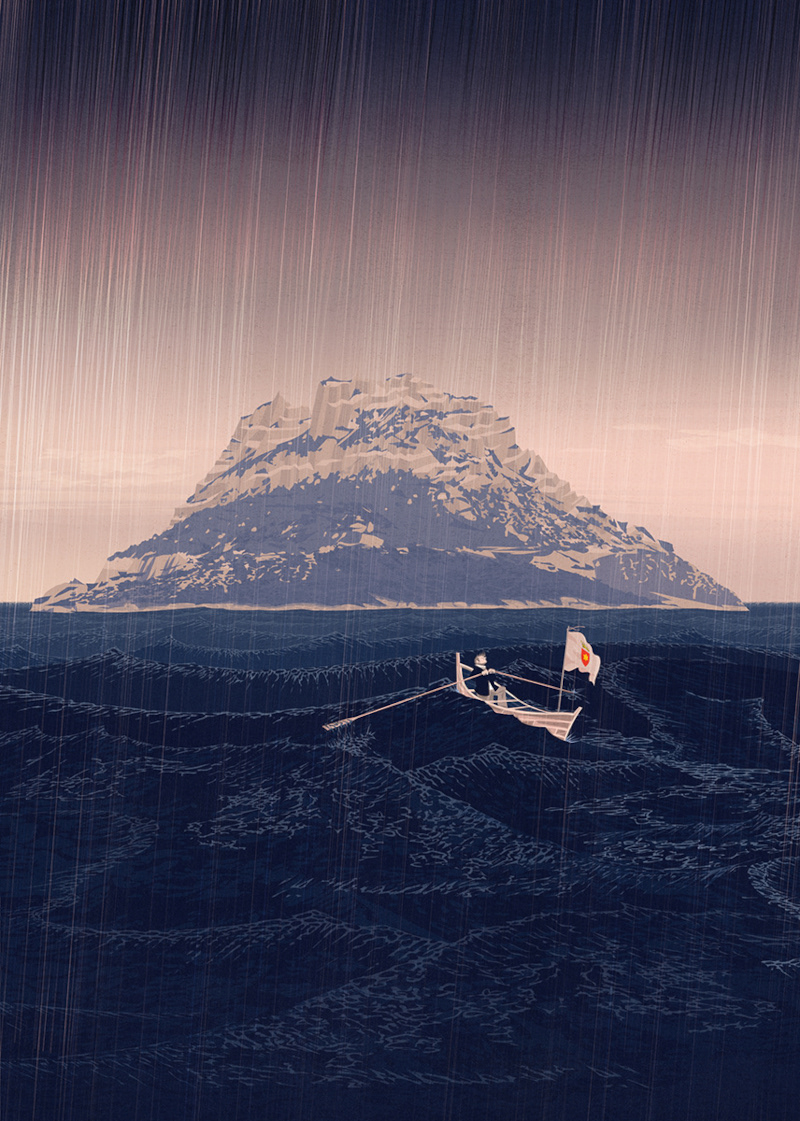
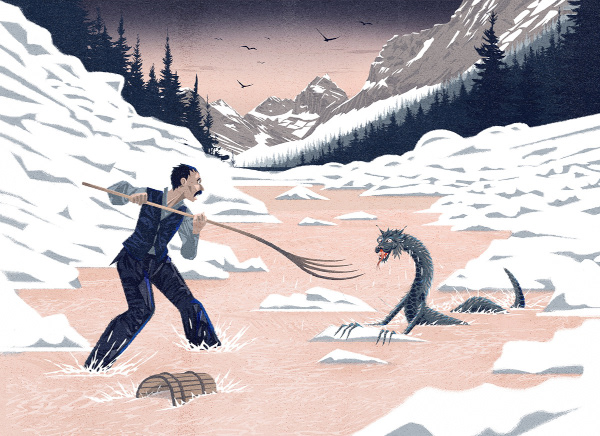
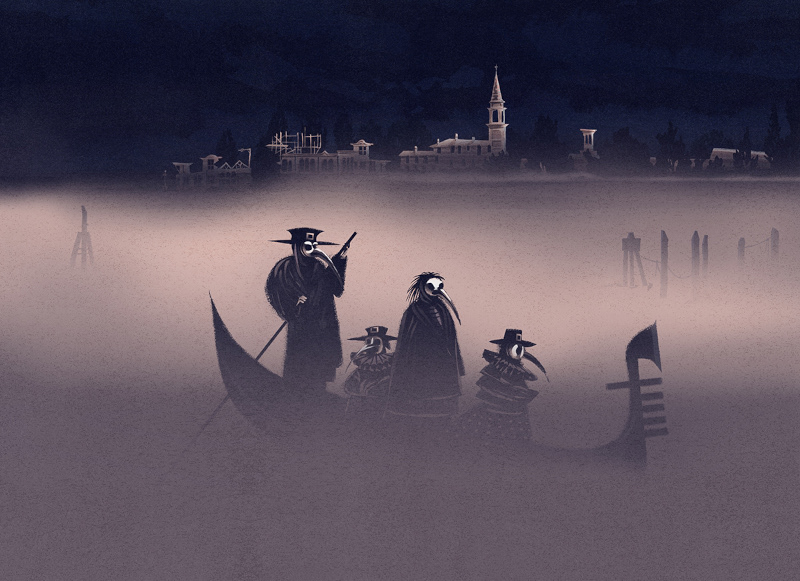
Can you name some of the most influential projects you’ve completed in your career so far? Why are those projects meaningful to you?
In 2018, I experienced burnout. The illustrator's job [is] to deal with a series of deadlines, pressures, stresses, and deliverables that make this activity very difficult if you can't carve out breaks. At that moment I needed that, to take a breather by working on something different. An illustrator usually has to deal with themes and messages that, for better or worse, are not his own. I wanted to create something personal, related to my passions. I have always been a fan of ancient legends, mysterious secrets, and seemingly inexplicable facts. I decided that I would have to find an opportunity to illustrate these stories, and if I did not find this opportunity, I would create it for myself. Thus, was born the collaboration with writer Massimo Polidoro. Together we imagined a book that would encapsulate all those places, often forgotten, related to curious facts or black legends. And so, an atlas for traveling in mystery was born. The title is “The Atlas of the Mysterious Places of Italy”, and after this book, the second volume has arrived: “The Atlas of the Mysterious Places of the ancient world”. I worked on these illustrations without an art director. My images influenced the writer's texts, and his texts influenced my images. It was a personal project into which I poured a lot of energy and passion. It was a great source of pride to discover that the Society of Illustrators in New York awarded the illustrations in the first volume a silver medal and those in the second book a gold medal. It meant so much to me because it is proof that when you work with transportation and passion, people get it. The illustrations of the atlases these days are on display in an exhibition in Milan open until the end of February [2023].
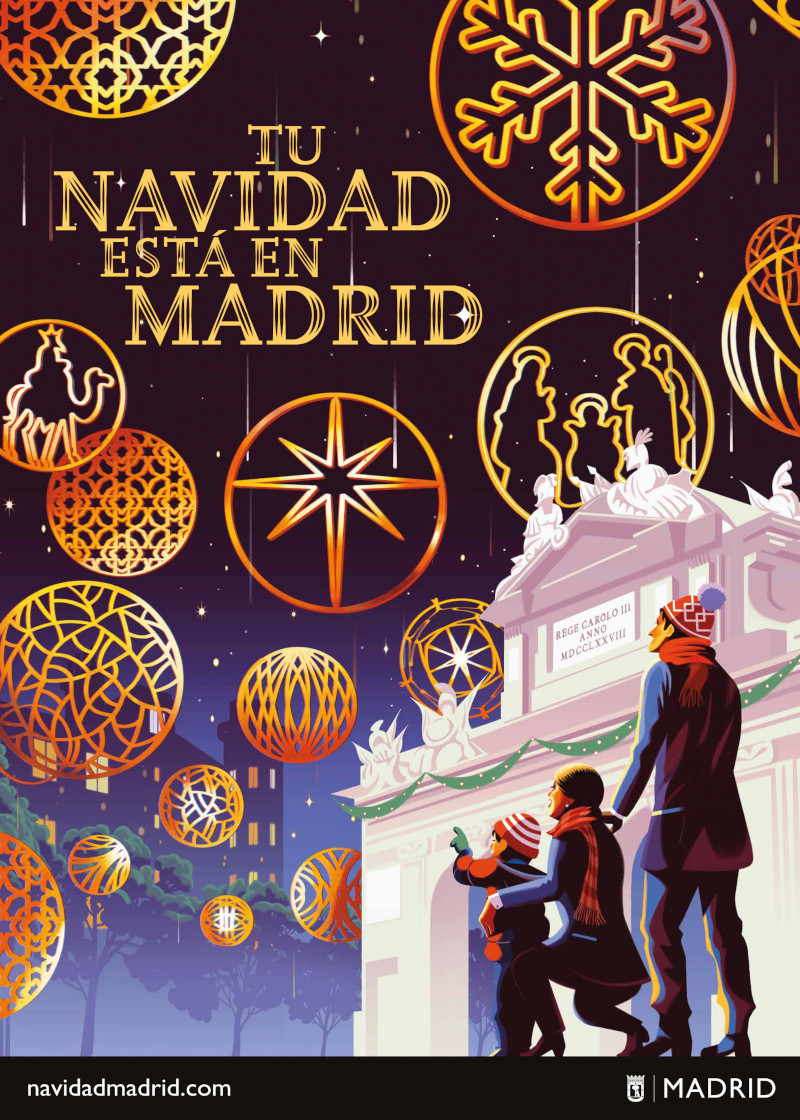
We are curious about future projects. What are you currently working on and where can we see your illustrations next?
I just made the Christmas poster for the city of Madrid, where I have lived for 15 years now. These days I have also finished the cover of the special Christmas issue of a French magazine and am working on labels for a Spanish wine. In a few days, on the other hand, I will be in a screen-printing studio for another personal project. I have created a poster with many illustrations of tiny islands on which there is at least one small construction. It is a signed, limited-edition silkscreen print that I will be selling on my shop and that makes me very happy because I am so fascinated by tiny islands. It took long and patient research to discover the right places to draw and I hope the work will intrigue those who, like me, love unusual places.

www.francescobongiorni.com
|
|

